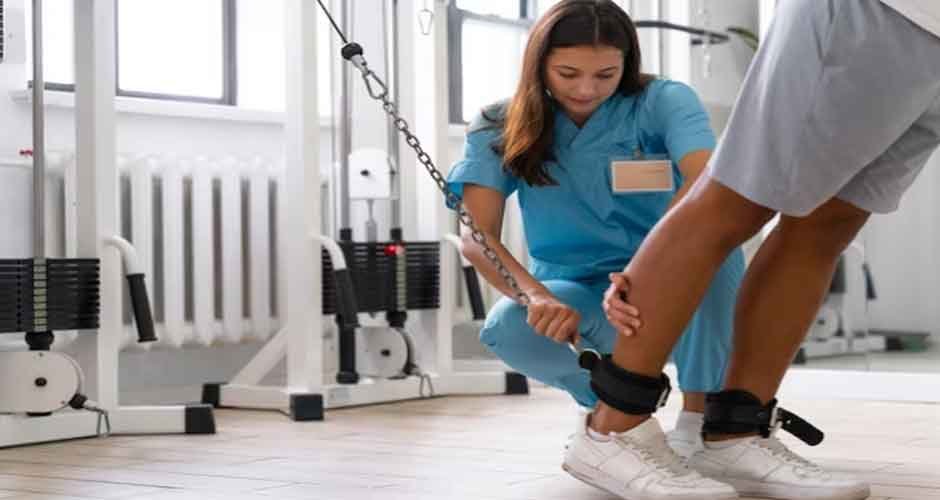
Injuries can disrupt our lives, causing pain, discomfort, and limitations in our daily activities. However, injury recovery doesn’t have to be a slow and arduous process. By following the right steps and adopting a proactive approach, you can accelerate your recovery and get back to living a vibrant and fulfilling life. In this blog, we’ll explore eight essential steps to speed up injury recovery and reclaim your vitality.
1. Consult with a Healthcare Professional
Consulting with a healthcare professional is the first crucial step in the injury recovery process. Whether you’re dealing with a sports injury, accident-related trauma, or chronic pain condition, seeking guidance from experienced doctors at Georgia Injury Center services and other personal injury clinics can provide invaluable support and expertise. These healthcare professionals specialize in diagnosing and treating a wide range of injuries, offering personalized care plans tailored to your unique needs and circumstances. By partnering with a trusted healthcare provider, you can receive comprehensive evaluations, accurate diagnoses, and effective treatment options to facilitate your recovery journey. Their expertise and guidance will ensure that you receive the proper care and support needed to overcome your injury and regain your quality of life.
2. Follow a Proper Rehabilitation Program
Following a proper rehabilitation program is essential for optimizing injury recovery and restoring function. These programs, often tailored by healthcare professionals or physical therapists, are designed to address specific injury types and individual needs. By adhering to a structured regimen of exercises, stretches, and therapeutic interventions, individuals can improve strength, flexibility, and mobility in the affected area. A comprehensive rehabilitation program also helps prevent further injury, promotes healing, and facilitates a safe return to normal activities. Whether recovering from a sports injury, surgery, or accident-related trauma, committing to a proper rehabilitation program is key to achieving optimal outcomes and regaining independence and functionality.
3. Prioritize Rest and Recovery
Rest is a fundamental aspect of injury recovery, allowing your body time to heal and regenerate damaged tissues. It’s essential to listen to your body’s signals and avoid pushing through pain or discomfort, as this can exacerbate your injury and prolong recovery time. Make rest a priority by incorporating periods of downtime into your daily routine. This may involve taking regular breaks, getting adequate sleep, and avoiding activities that place undue stress on the injured area. By giving your body the rest it needs, you’ll facilitate the healing process and optimize your recovery potential.
4. Maintain a Balanced Diet
Nutrition plays a critical role in supporting injury recovery and promoting overall health and well-being. Consuming a balanced diet rich in essential nutrients, vitamins, and minerals can fuel your body’s healing processes and enhance tissue repair. Focus on incorporating nutrient-dense foods such as fruits, vegetables, lean proteins, whole grains, and healthy fats into your diet. These foods provide the building blocks your body needs to repair damaged tissues, reduce inflammation, and boost immune function. Additionally, staying hydrated is essential for promoting circulation, flushing out toxins, and maintaining optimal hydration levels during the recovery process.
5. Stay Active with Low-Impact Exercises
While rest is essential for injury recovery, staying sedentary for too long can lead to muscle atrophy, stiffness, and reduced mobility. Incorporating gentle, low-impact exercises into your routine can help maintain joint flexibility, improve circulation, and prevent deconditioning during the recovery process. Depending on your injury type and severity, your healthcare provider may recommend specific exercises such as walking, swimming, cycling, or yoga. These activities are gentle on the joints and muscles while still providing valuable cardiovascular and strengthening benefits. Be sure to consult with your healthcare provider before starting any exercise program and listen to your body’s signals to avoid overexertion.
6. Manage Pain and Inflammation
Pain and inflammation are common symptoms associated with injuries and can significantly impact your comfort and mobility during the recovery process. Fortunately, there are several strategies you can use to manage pain and reduce inflammation naturally. Applying ice packs or cold compresses to the injured area can help numb pain, reduce swelling, and alleviate discomfort. Additionally, over-the-counter pain relievers such as acetaminophen or ibuprofen can provide temporary relief from mild to moderate pain. Other natural remedies for inflammation include applying topical creams or ointments containing arnica, turmeric, or capsaicin, which have anti-inflammatory properties. Be sure to discuss pain management strategies with your healthcare provider to determine the safest and most effective options for your specific needs.
7. Practice Stress Management Techniques
Stress can exacerbate pain, hinder healing, and impede your overall recovery progress. Incorporating stress management techniques into your daily routine can help alleviate tension, promote relaxation, and support your body’s natural healing processes. Techniques such as deep breathing exercises, meditation, yoga, and progressive muscle relaxation can help reduce stress levels, calm the mind, and promote a sense of well-being. Additionally, engaging in enjoyable activities, spending time in nature, and connecting with loved ones can provide emotional support and enhance your overall resilience during the recovery process. By prioritizing stress management, you’ll create a more conducive environment for healing and accelerate your recovery journey.
8. Stay Positive and Patient
Finally, maintaining a positive mindset and practicing patience are essential components of injury recovery. It’s normal to experience frustration, setbacks, and challenges along the way, but adopting a hopeful and optimistic outlook can help you navigate these obstacles with resilience and determination. Celebrate small victories, acknowledge your progress, and focus on the steps you’re taking to improve your health and well-being. Surround yourself with supportive friends, family members, and healthcare providers who can offer encouragement and guidance throughout your recovery journey. Remember that healing takes time, and it’s essential to be patient with yourself as you work towards regaining your strength, mobility, and vitality.

Injury recovery is a journey that requires dedication, commitment, and perseverance. By following these eight essential steps, you can accelerate your recovery process and reclaim your vitality more quickly. Remember to consult with a healthcare professional, prioritize rest and recovery, maintain a balanced diet, stay active with low-impact exercises, manage pain and inflammation, practice stress management techniques, and stay positive and patient throughout the process. With the right approach and mindset, you can overcome obstacles, achieve your recovery goals, and enjoy a vibrant and fulfilling lifestyle once again.

